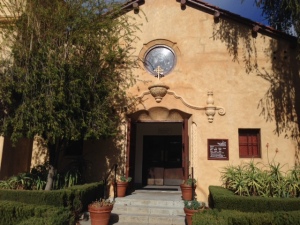![]() Although St. Patrick’s Day is a time when the world’s attention is drawn to all things Irish, there’s a resource-rich online site called The Irish Music Daily that’s dedicated to sharing and promoting Irish music year-round. The Irish Daily shares lyrics and chords for popular Irish songs as well as news and articles about Irish musical figures both older and upcoming. Recent posts cover popular musical sensations such as U2, Enya, Celtic Thunder and beloved Irish flutist, James Galway. Aside from block-buster talent, there’s also a great section called “Showcase” that spotlights amazing new talents and interpreters of Irish music from countries all over the world.
Although St. Patrick’s Day is a time when the world’s attention is drawn to all things Irish, there’s a resource-rich online site called The Irish Music Daily that’s dedicated to sharing and promoting Irish music year-round. The Irish Daily shares lyrics and chords for popular Irish songs as well as news and articles about Irish musical figures both older and upcoming. Recent posts cover popular musical sensations such as U2, Enya, Celtic Thunder and beloved Irish flutist, James Galway. Aside from block-buster talent, there’s also a great section called “Showcase” that spotlights amazing new talents and interpreters of Irish music from countries all over the world.
Even if you’re already a fan or devotee of Irish music, this site provides you with so much information, you’ll want to bookmark it and return often. Here are some of our favorite links from that site:
Irish Performers Choose Their Favorite Songs For St. Patrick’s Day
http://www.irishmusicdaily.com/st-patricks-day
Who’s Who and Who’s New in Playing and Interpreting Irish Music Around The World
http://www.irishmusicdaily.com/video-showcase
Top Irish Musicians And Instrumentalists
http://www.irishmusicdaily.com/irelands-top-instrumentalists
Links and Related Resources
IRISH MUSIC DAILY – Home Page
http://www.irishmusicdaily.com/

MYO Bodhran and Tipper tutorial: https://www.teacherspayteachers.com/Product/Irish-Drum-Make-and-Play-Your-Own-Bodhran-and-Tipper-2410657
Whistle a Merry Tune – With A Tin Whistle
http://www.tinytappingtoes.com/early-learning-with-music/whistle-a-merry-tune-with-a-tin-whistle/
Morris Dancing Bells For Kids
http://www.tinytappingtoes.com/early-learning-with-music/easy-morris-dancing-bells-for-children/
Easy Introduction to 10 Irish Instruments
https://makingmulticulturalmusic.wordpress.com/2014/03/11/an-easy-introduction-to-irish-instruments/
Irish Videos on Multicultural Kids Music Vids http://multikidsmusicvids.com/?cat=512





















